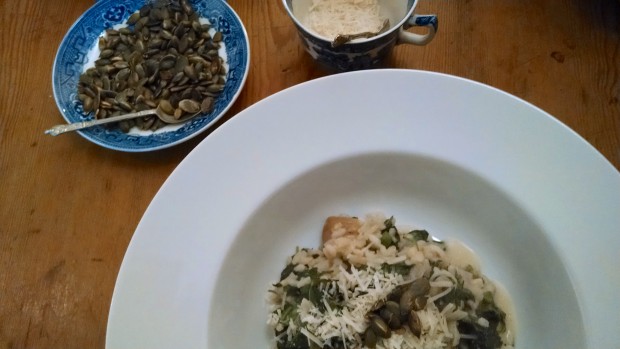
My mum once wrote a notebook of recipes for one of my brothers when he went to university. One of these recipes was entitled: Marmite on toast. Thereby making it a dish in its own right. Marmite on Toast. I laughed then. I wouldn’t now.
It should have read: Marmite on toast with Lots of Salty Full Fat Cornish Butter, and you’re almost there. Add in to the mix a strong brew and white bread and I am all over it. The ultimate comfort food so quintessentially British that our more sophisticated gastronomic neighbours would rather hurl themselves onto a burning pile of oily fish and ripe tomatoes than go anywhere near the filthy brown (unnervingly shiny) goo.
To add fuel to the fire, or rather olive oil to that already burning pile, have you ever tried spaghetti, butter and marmite? No? Do it. Nigella raves about it, referencing Anna del Conte as her source and justifying it as an Italian tradition derived from using leftover stock with spaghetti. No need for that. Put the spaghetti on in the normal packet way, chuck a knob of butter into a saucepan, a teaspoon of Marmite and some (a dessertspoon or two) of the pasta jus to lubricate, add to pasta and if you’ve got it, sprinkle a bit of Parmesan on top (or Cheddar, come on). Mangez. Mangia. ‘ave it. Etc.
I find that Marmite slips under simple dishes in a very satisfying manner, not unlike a special piece of well-fitted underwear: on toast under baked beans, under scrambled eggs (or any egg for that matter) or melted cheese for an English rarebit. Most useful of all is its ability to masquerade as a vegetarian stock; many a dish of mine brinkering on the I’ve-made-it-up-but-not-quite-pulled-it-off has been resurrected with a generous teaspoon of Marmite; gravies, glaze and other things not beginning with ‘g’ – rims of cocktails are being marmite-d, there are cakes, roast potatoes but as yet, no beauty treatment. It’s only a matter of time.
I have a huge amount of love for Marmite. I have chased its bulbous brown figure down the aisles of many a foreign supermarket with increasing success. It’s been welcomed back into the lives of the Danes after a three-year ban and now there’s even more of a reason not to shop at Tesco and to have voted ‘remain’.
Get more about Marmite from the Ministry of Marmite and there is also the very comprehensive Marmite cook book. Oh and it’s worth mentioning Ms Marmite Lover, a well-respected food blogger with a well-respected name.


